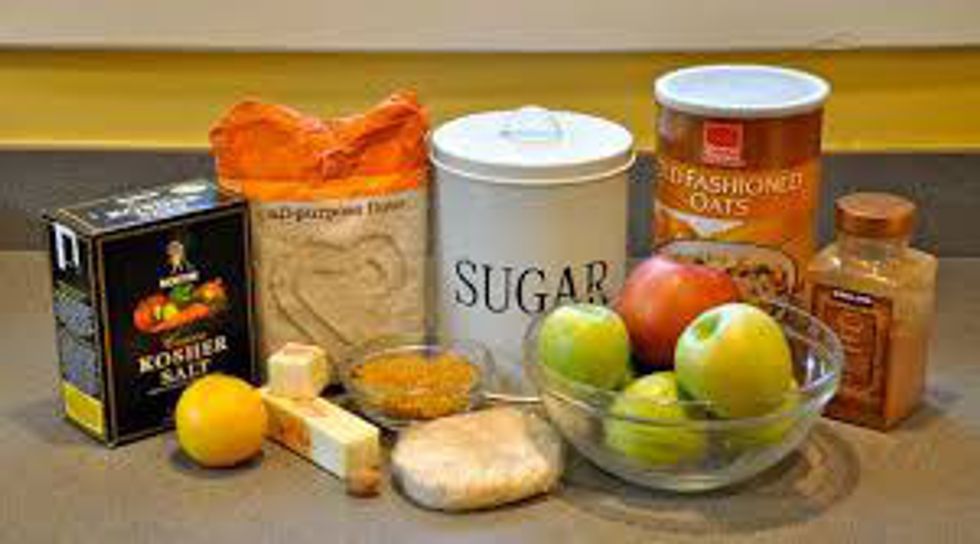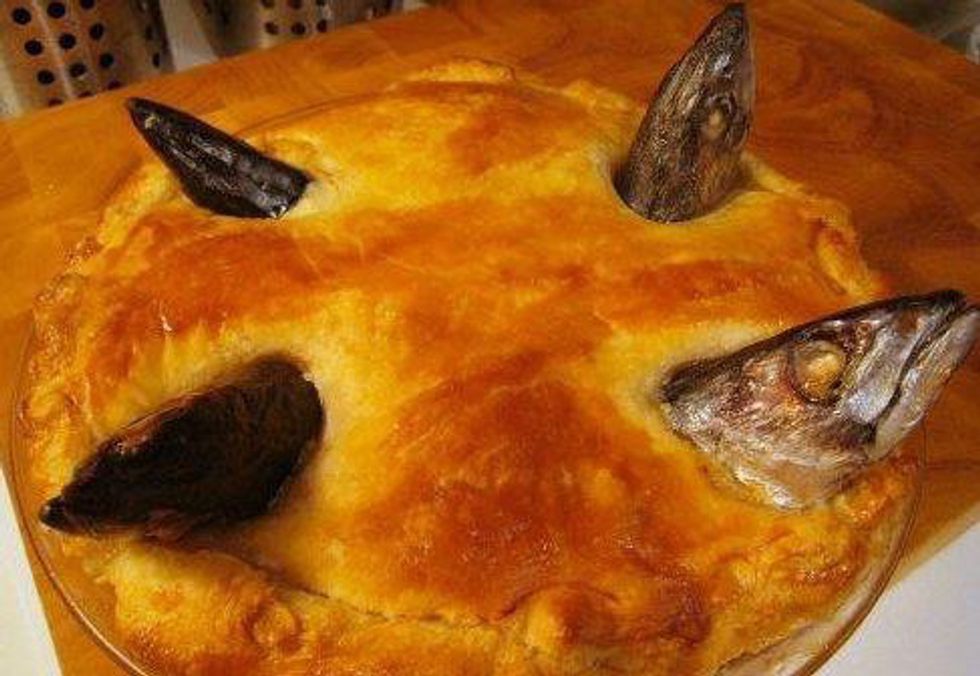It's an overused phrase that states, "everyone has a novel inside of them". However cliched it may be, who out there can truly doubt such a statement? Everyone has different experiences and different levels of imagination, and all of these can be channeled by each and every person into a work of literature. However, very few choose to go through with this. Why is that? Well, one reason (and perhaps the main reason) is that the idea of writing a novel is intimidating. Between sky-high word counts and even forming the plot itself, surely it isn't an easy task. However, as the author of a novel myself, I will be the first to say that writing a novel can be as easy as pie. In fact, it's almost exactly like pie. Laugh all you want, but today, we're going to take a look at how you can plan a novel in less than five minutes, and how it's really no different than baking a pie.
Step 1: Gather your ingredients
Before you can start cooking, you have to figure out what you want to use to make your pie. The same goes with a novel. The ingredients for your novel are the aspects you'll put together to form the whole product.
To determine your ingredients, take out a piece of paper or open a Word document. Without any second thoughts, write down a list (I would recommend bulleted) of things you would like to write about, or things you like to see in a novel. Some examples could be "vampires", "war", "social classes", "comedic themes", or "futuristic technology". While these examples would admittedly make the most fascinating novel imaginable, use the first things that come to mind when you think of what you would like to read yourself.
Once you have your list, highlight or circle the ones you like the most, or the ones that would go together the best. These will be your main themes. The others that you didn't highlight or circle may be used as well, but won't be part of the main theme and plot.
Now that we have our ingredients out and know how much we need of each, we have to consider...
Step 2: What kind of pie can we make with these?
When we mix together the ingredients you chose, what kind of pie do you think it will make? Something sweet? Something spicy? Maybe even something savory? This is the point where you need to decide on what kind of genre you want to work with. Remember that, while strawberry pies are good, and so are rhubarb pies, strawberry-rhubarb pies are often the best; you can use as many genres as you want, and whatever combination you please.
Choose your genre with discretion.
After all, the concept of genre shouldn't be limiting; it should give the writer and the reader an idea of what they should expect to achieve with the work. For example, when you bite into an apple pie, you expect a bit of spice, and with a chocolate pie, you expect some sweetness. That doesn't mean they have to abide by your expectations entirely (after all, what's wrong with sour apples and bitter chocolate?), but you should at least be able to anticipate what the pie will resemble.
Now that you have your genre chosen, it's finally time to...
Step 3: Make your filling
Congratulations! You've officially made your pie's crust. However, we can't stop here. After all, if you slapped down your pie as it is in front of your family right now, it would be the last time you were allowed to host Thanksgiving dinner.
Luckily for you, however, you've made it past the most difficult part. Now you get to pursue the most fun part: making your filling. Your crust is your foundation; it holds the good stuff together. Your crust consists of your main themes and genre, which holds your delicious plot. However, without the crust, the filling would be a soupy disaster with no consistency, and without the filling, it would be a bland, basic crust.
Now that you know your themes, what do you want to do with them? What's going to happen in your story, and who's going to have to take part in it? This is entirely up to you, and there are no guidelines you should follow outside of including what you want. After all, this is your novel.
After some hours of baking (read: days to months of writing), you'll finally have your completed pie. However, as this is your first pie, there may be some imperfections; the crust might be flimsy, or the filling might be a bit bland. This is why you should first write your novel, and then edit it when it's finished. While you may be discouraged by your first pie, just remember that, after baking more and more of them, it will be as easy as, well, pie.



























